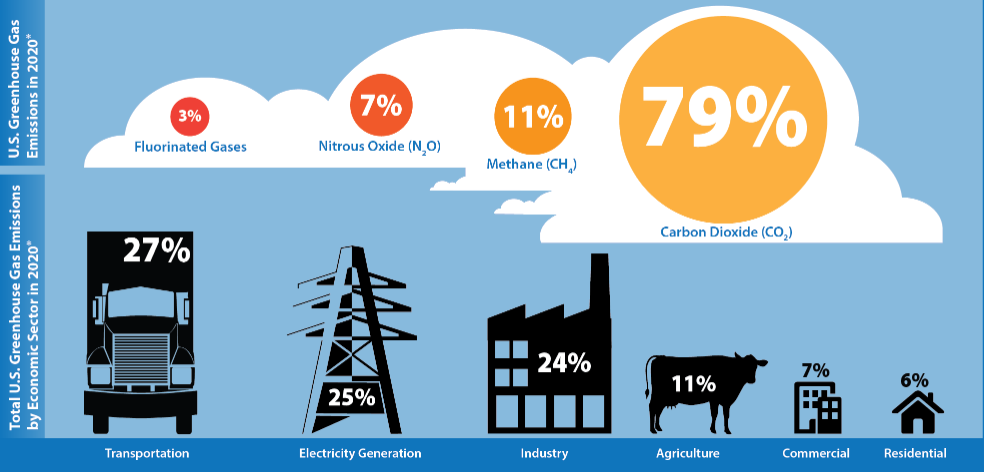Learn about the relationship between carbon sequestration and cows. This is Part 3 of a three-part mini-series in our Soil Series.
If we’re going to think about carbon sequestration holistically, then we must include methane – even if alarmists continue to incorrectly claim that cows cause climate change. First, a few facts.
- While it’s true that methane is 25 times more potent than carbon dioxide at trapping heat in the atmosphere, methane (CH4) only accounted for 11.5% of total U.S. greenhouse emissions. (See the pie chart in Part 1).
- It’s a little-known fact, but methane has a much shorter atmospheric lifetime than carbon dioxide (CO2) before it breaks down in the environment. Methane’s atmospheric lifetime is around 12 years, but CO2’s can be centuries. Source: International Energy Agency (IEA).
- Agriculture, a segment that’s significantly larger than just cows, accounted for only 11% of U.S. greenhouse gas emissions overall. See the image below for comparisons to transportation, electricity generation, and industry.
If cows are truly a problem, they aren’t the biggest ones we have. Ironically for the critics of cattle, cows may even be part of the solution.

Best Practices and the Big Picture
Cows help carbon-sequestering grasses to grow, not just with their manure but with their hooves, which help aerate the soil. Of course, too many cows in too small of a space for too long isn’t good for grass – or the cows. That’s why rotational grazing is an agricultural best practice that helps grass and cows alike. Importantly, grass can also sequester greenhouse gases while helping to build healthy soil.
But what about the buildup of methane and the removal of grasses during grazing?
In a 2018 article for Ecological Applications (click to download), a group of scientists from the University of Illinois at Urbana-Champaign determined that “Although grazing increased total net ecosystem CH4 emissions and removed aboveground biomass, it increased the net storage of C and decreased the global warming potential associated with C fluxes of pasture by increasing its CO2 sink strength”.
Wetter soils are more effective, but the authors emphasize that “more than one-fourth of the global land area covered by grasslands is located in the subtropics and tropics,” where rainfall is typically abundant.
There’s more research that we’d like to share, so contact us if you’d like us to send it to you.
You Might Also Like
What is Soil and Why Is It Important? Introducing the Soil Series